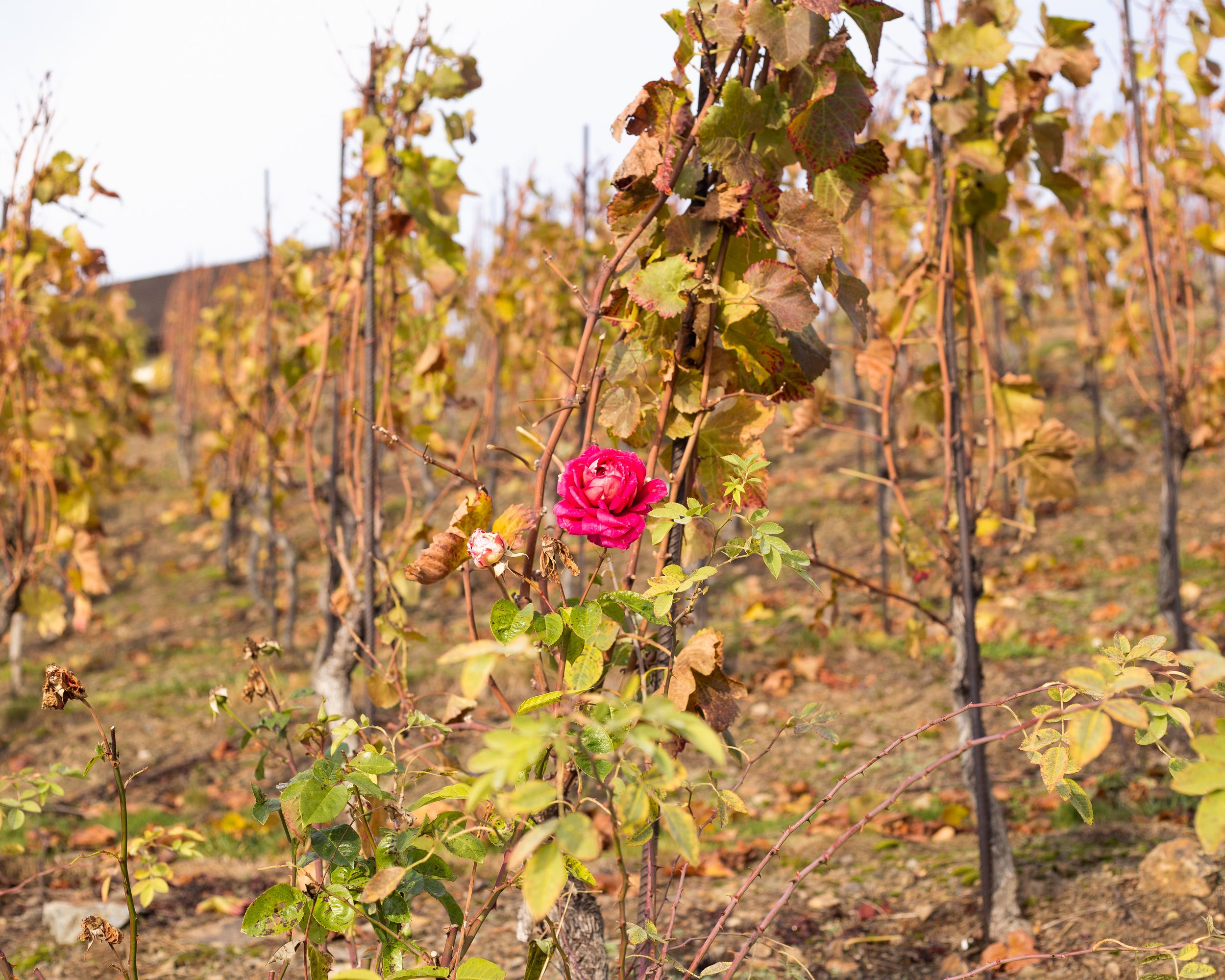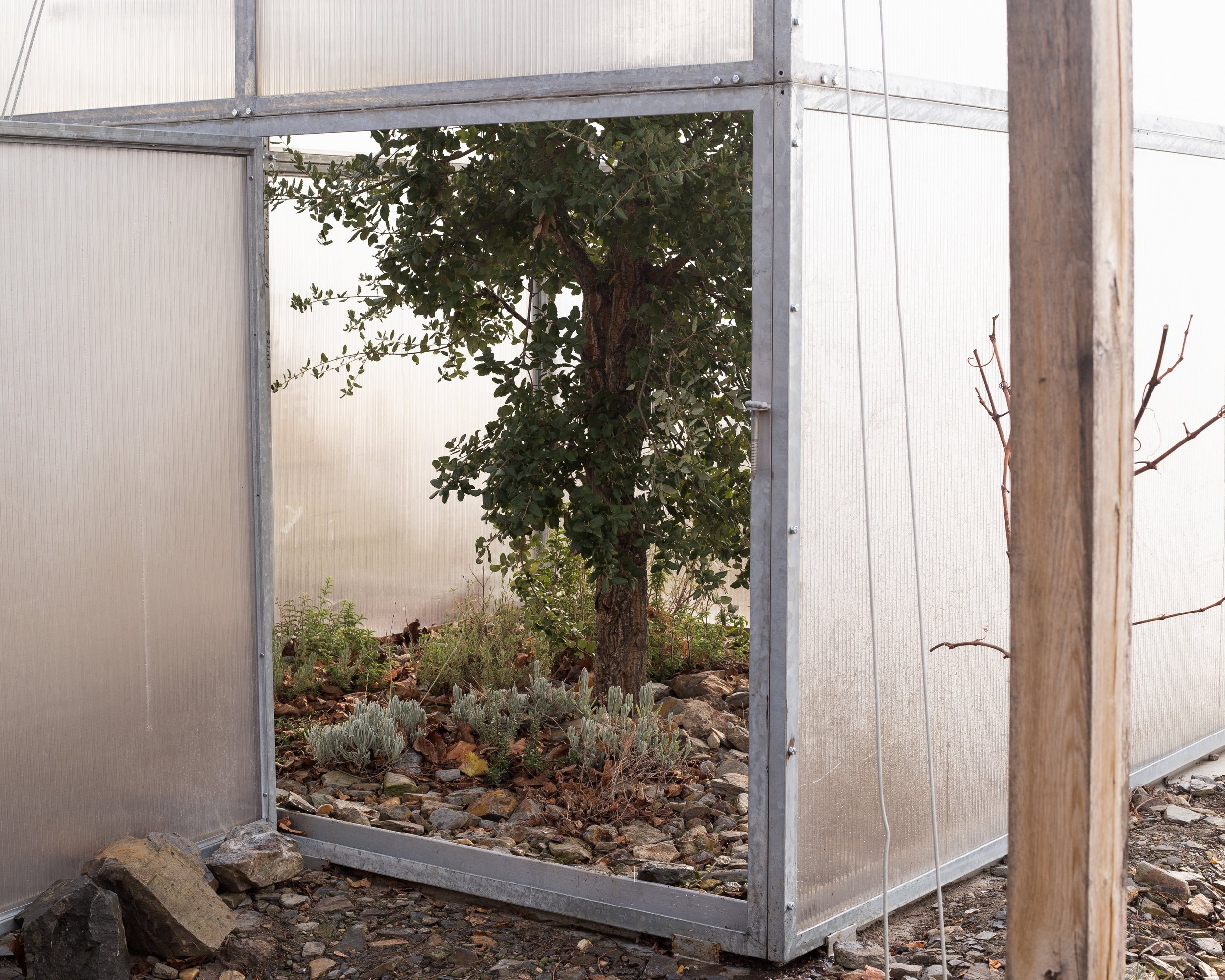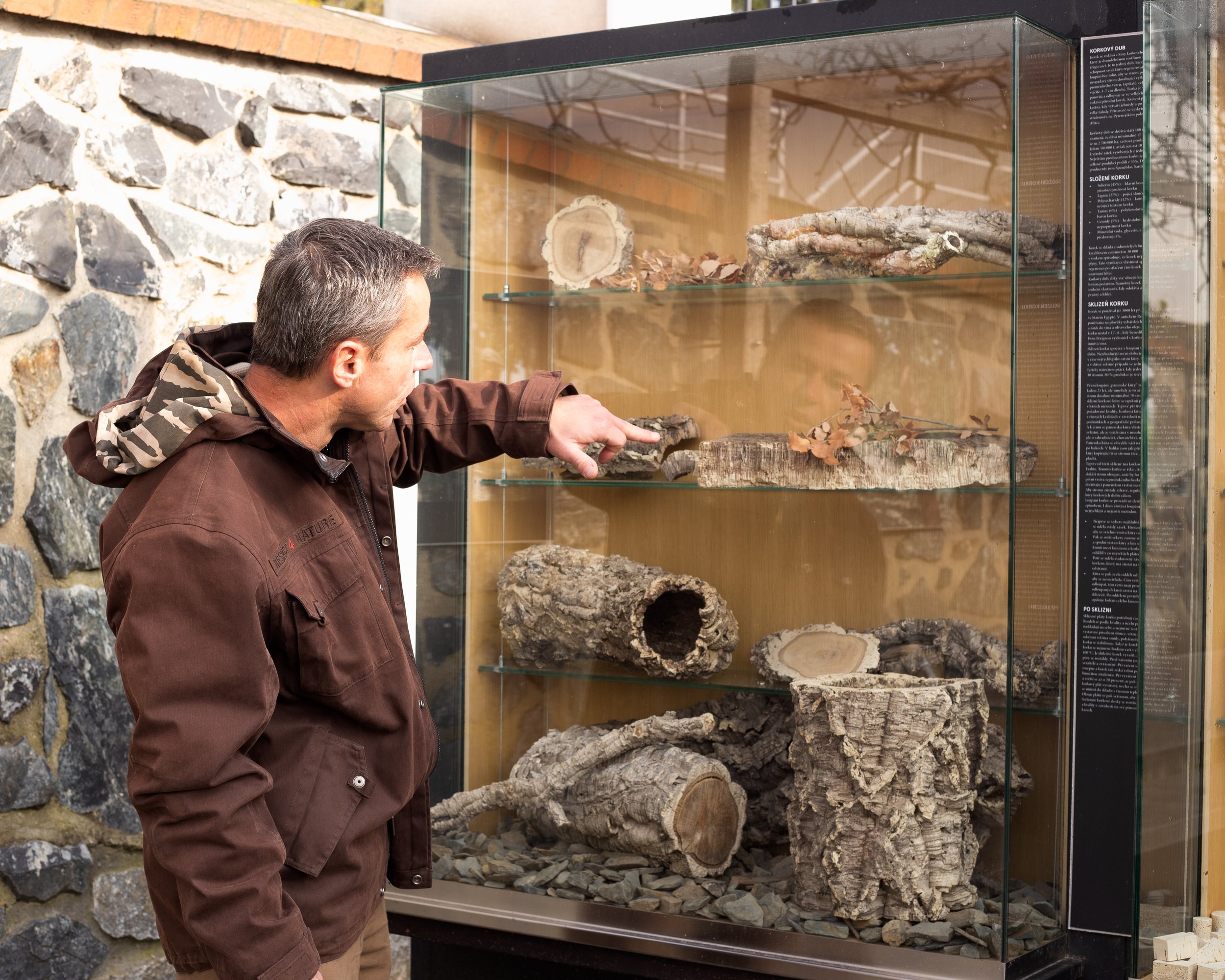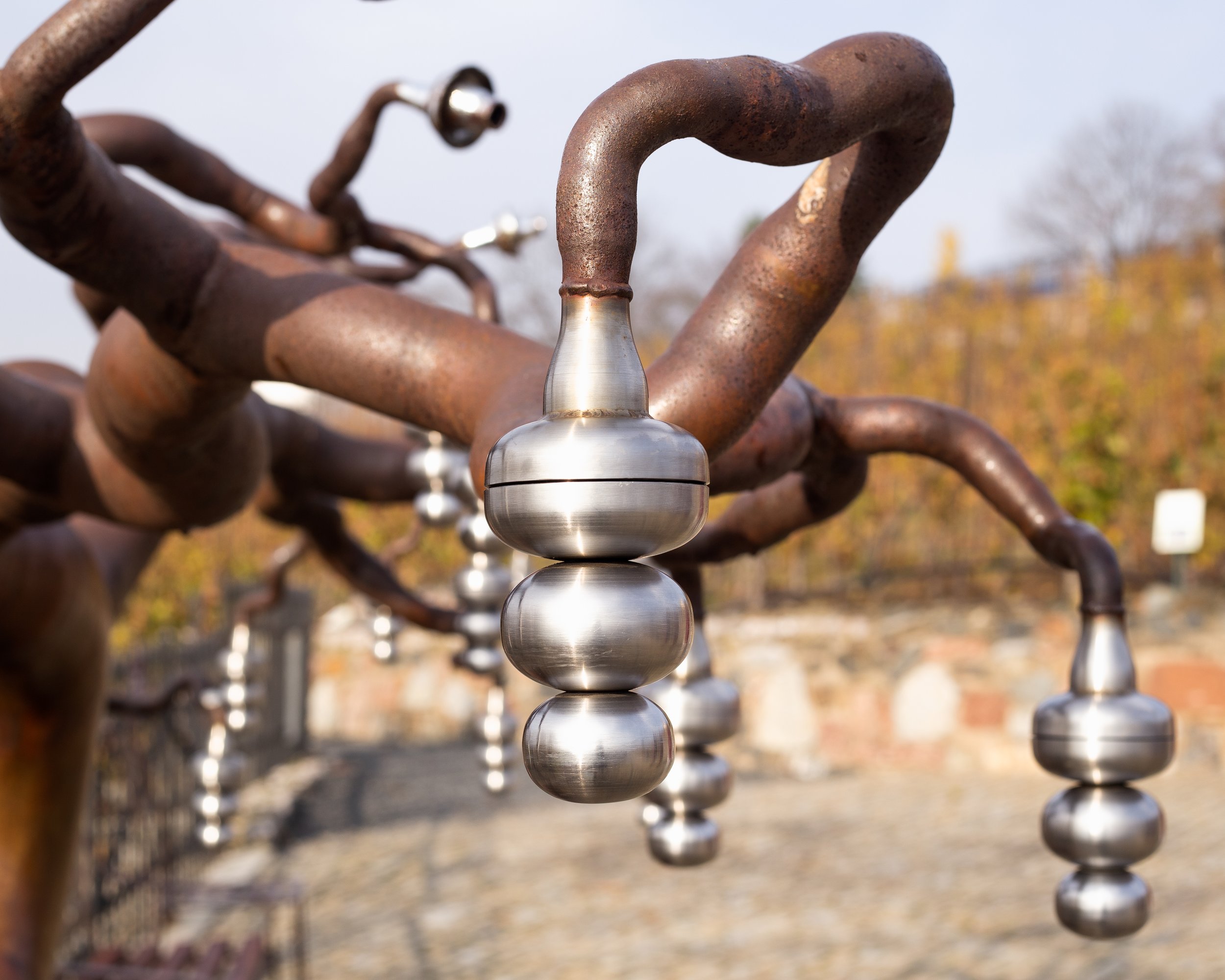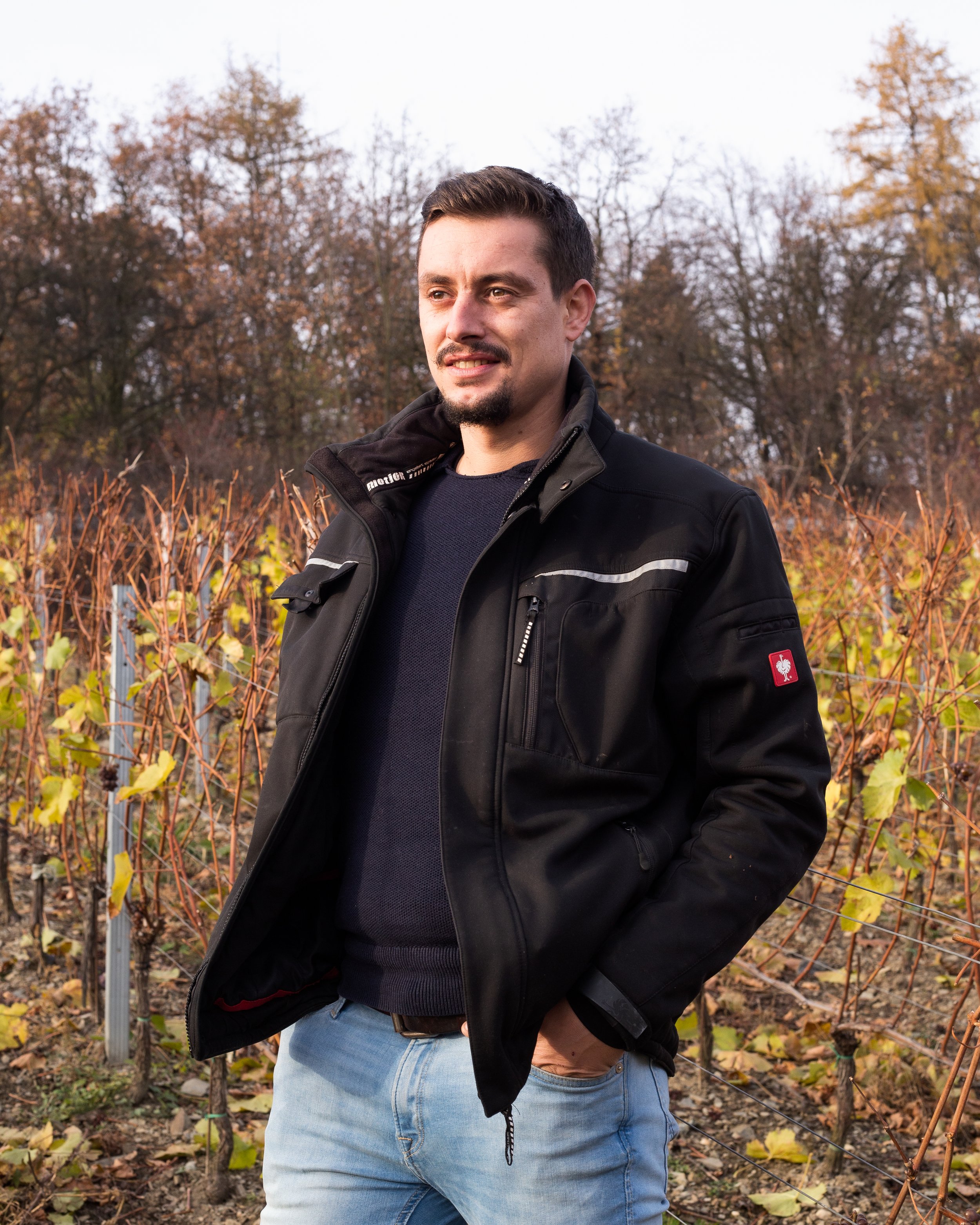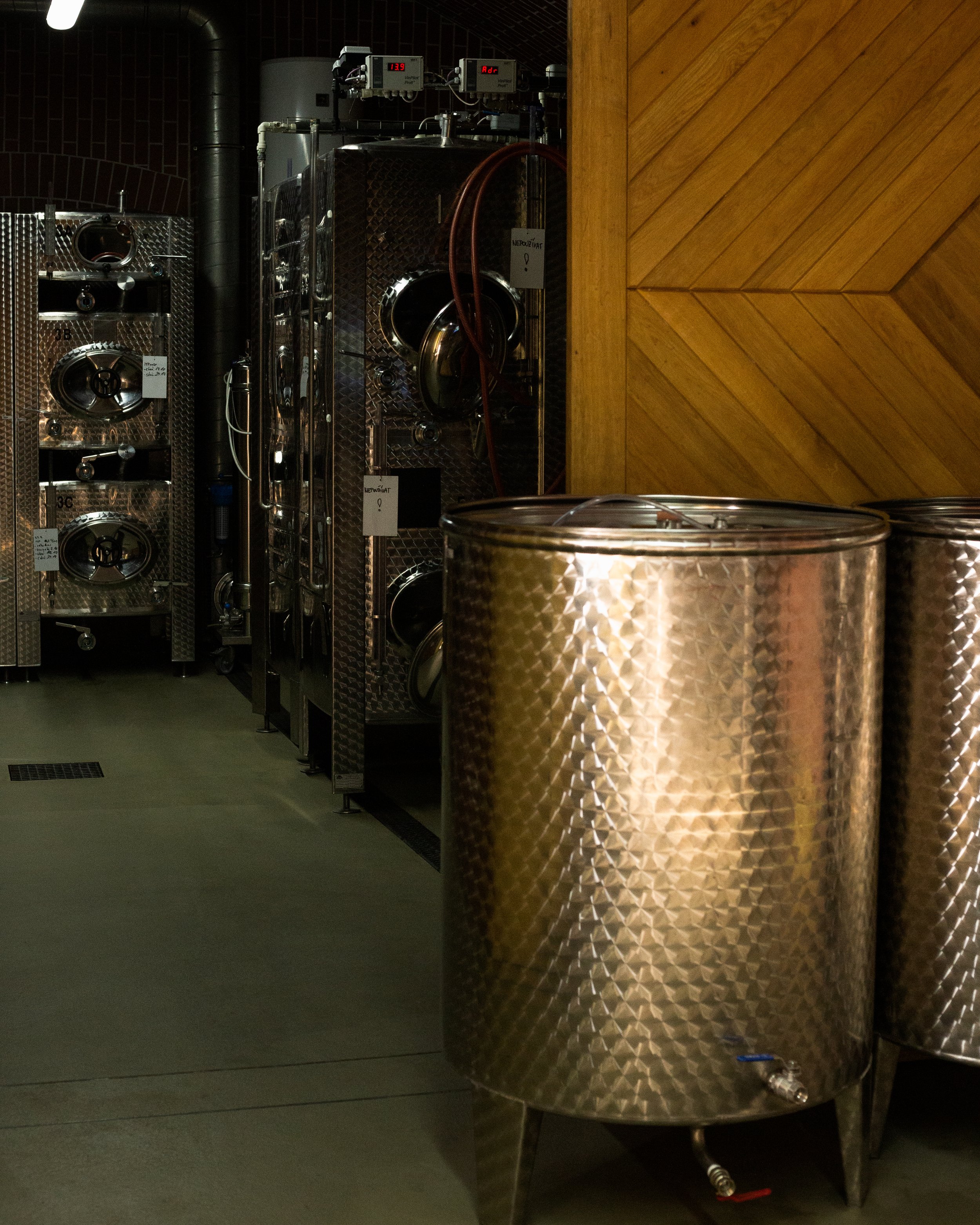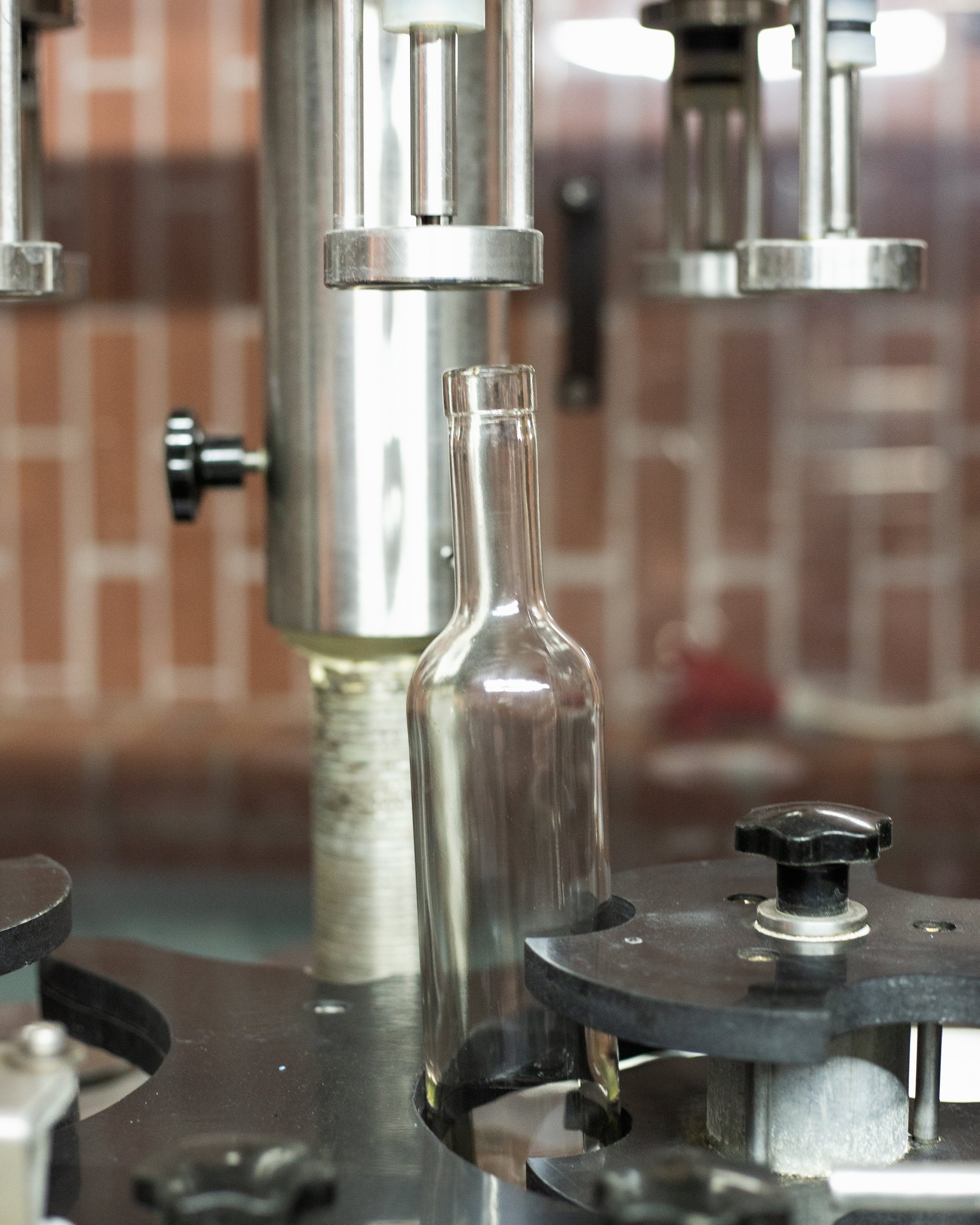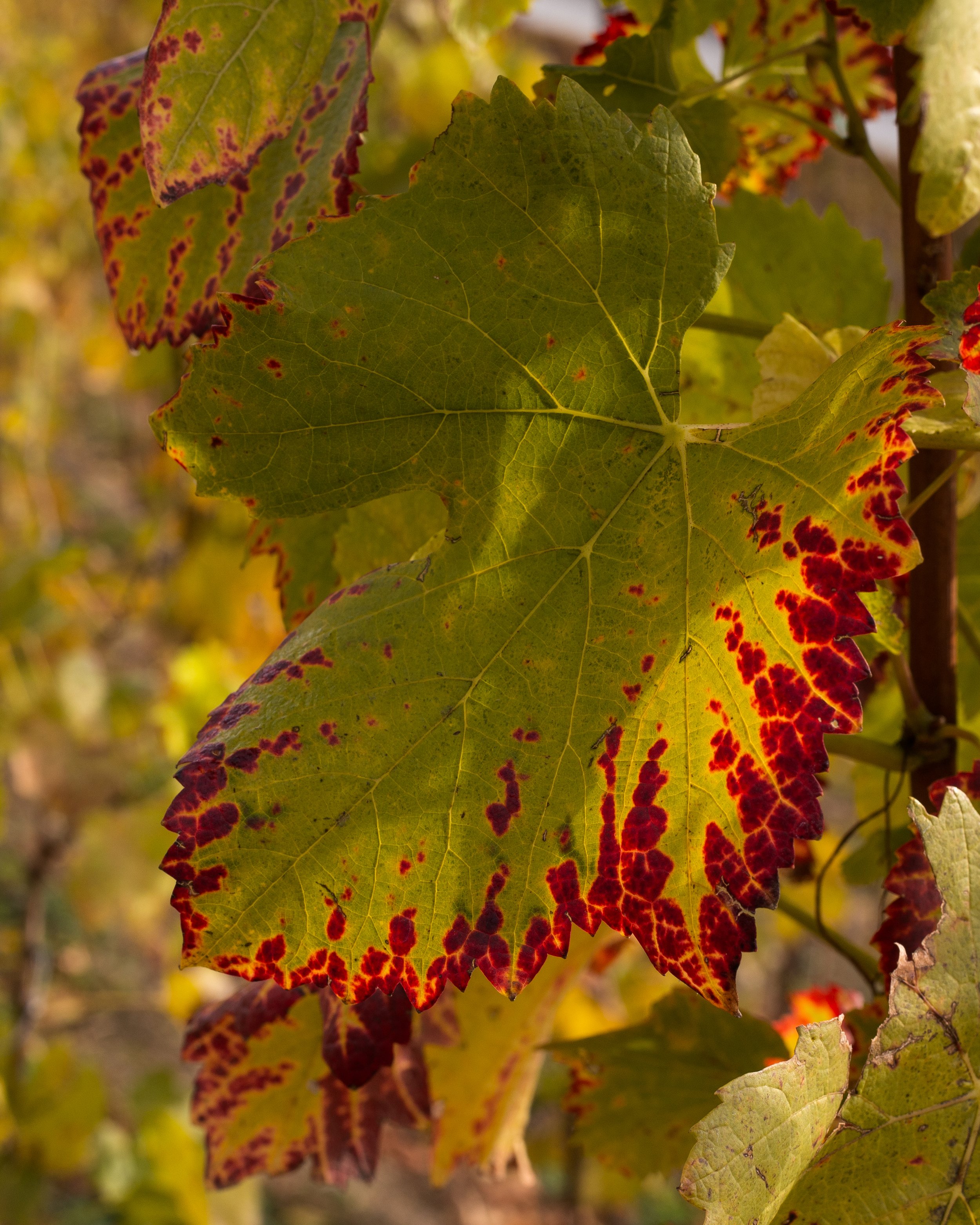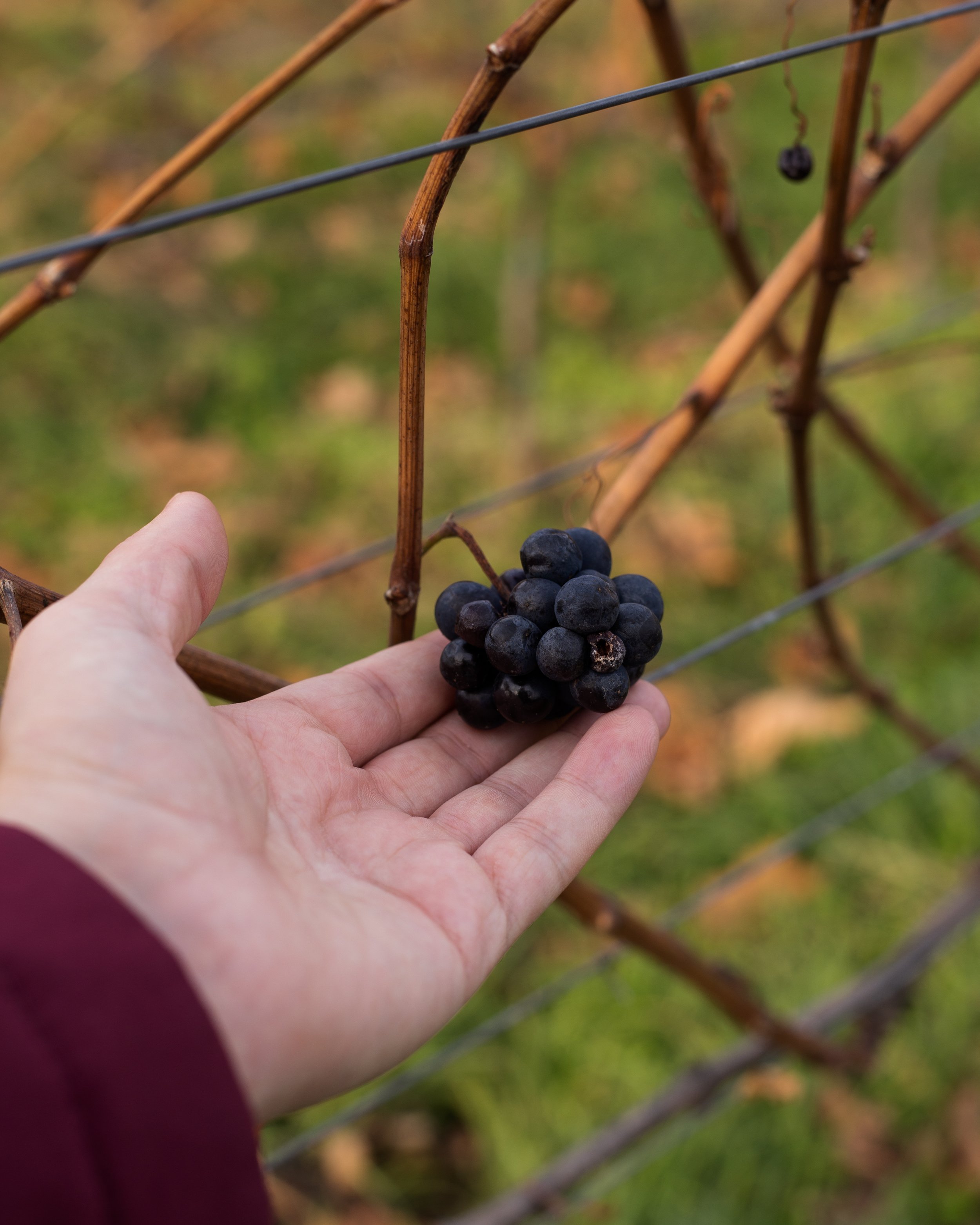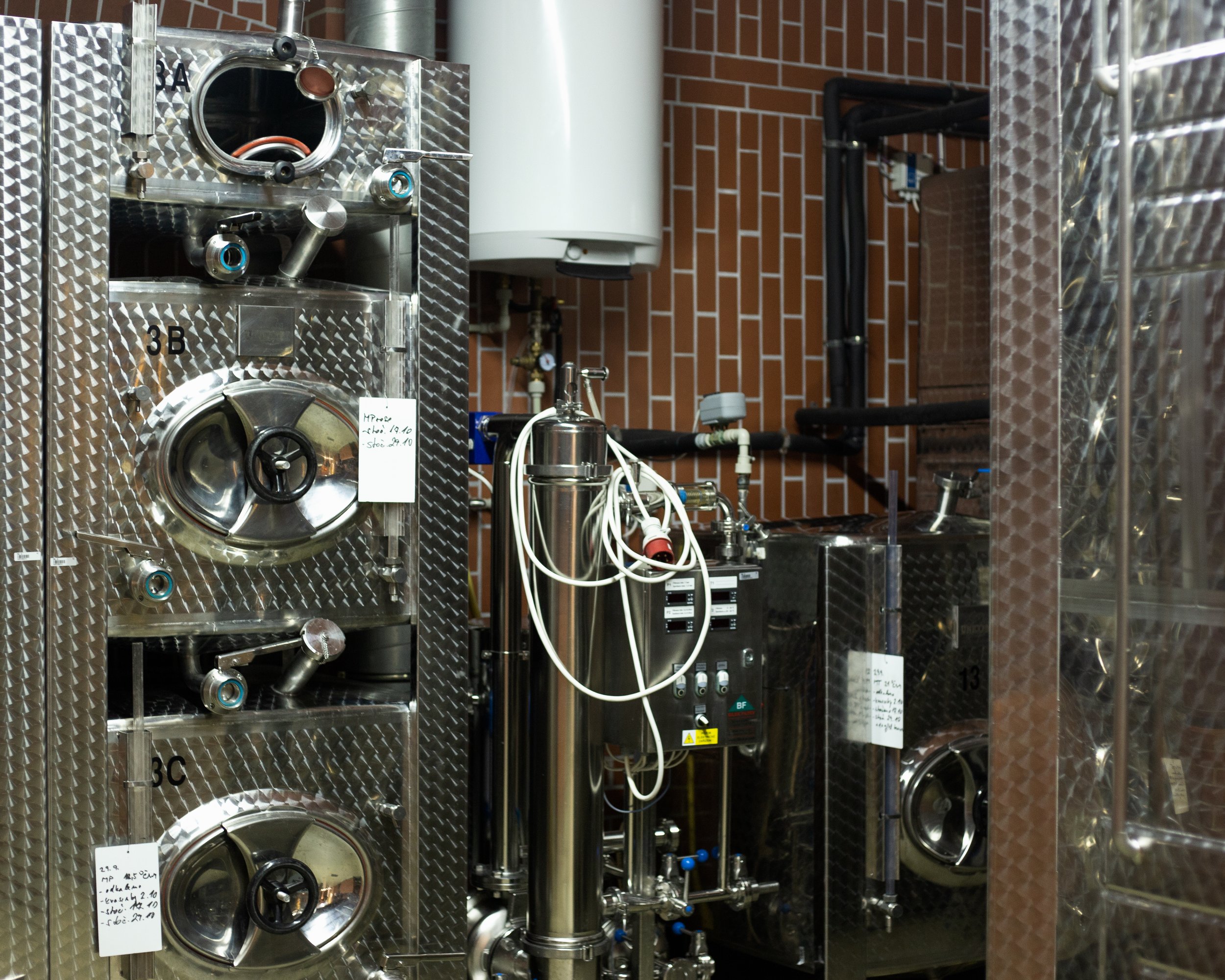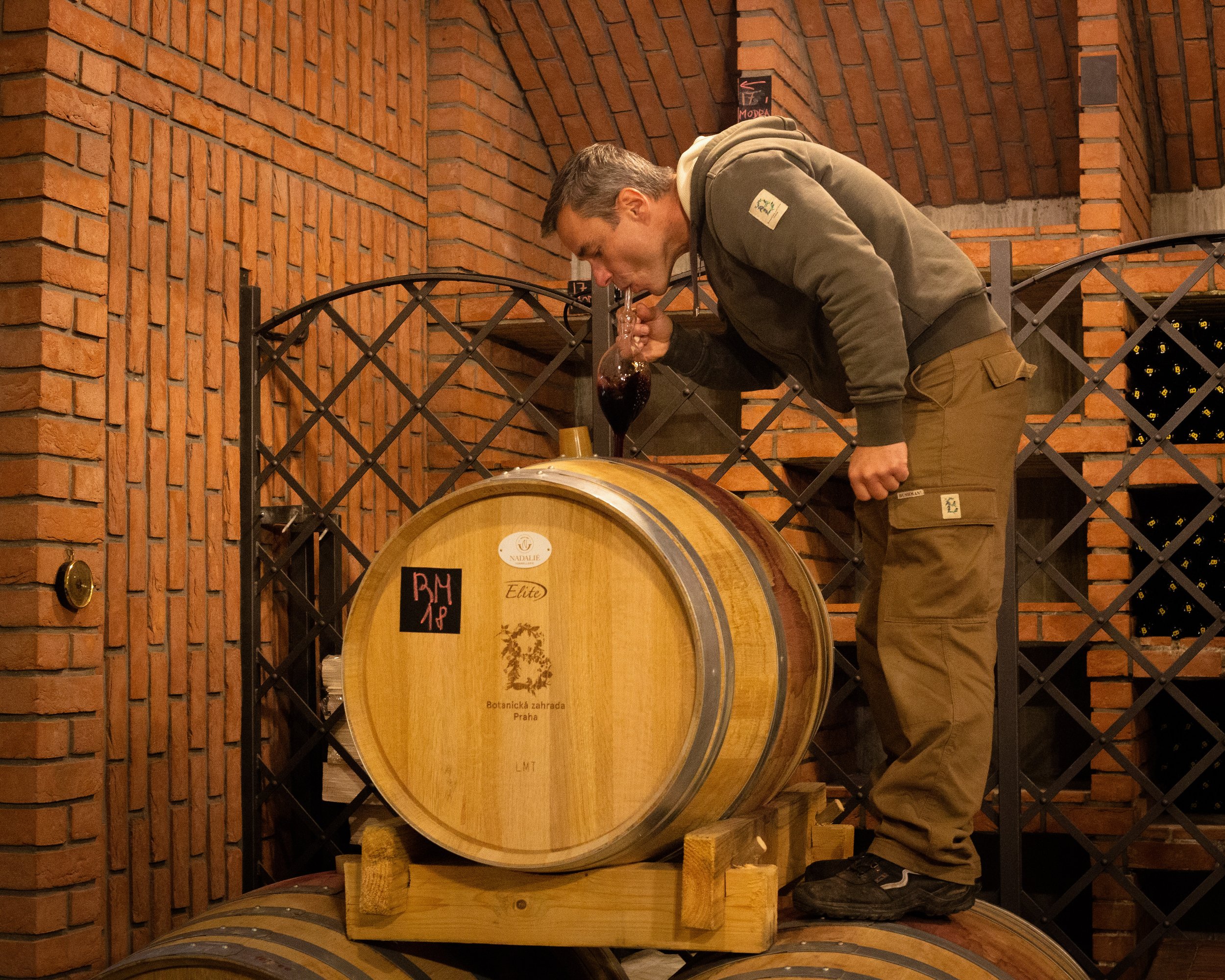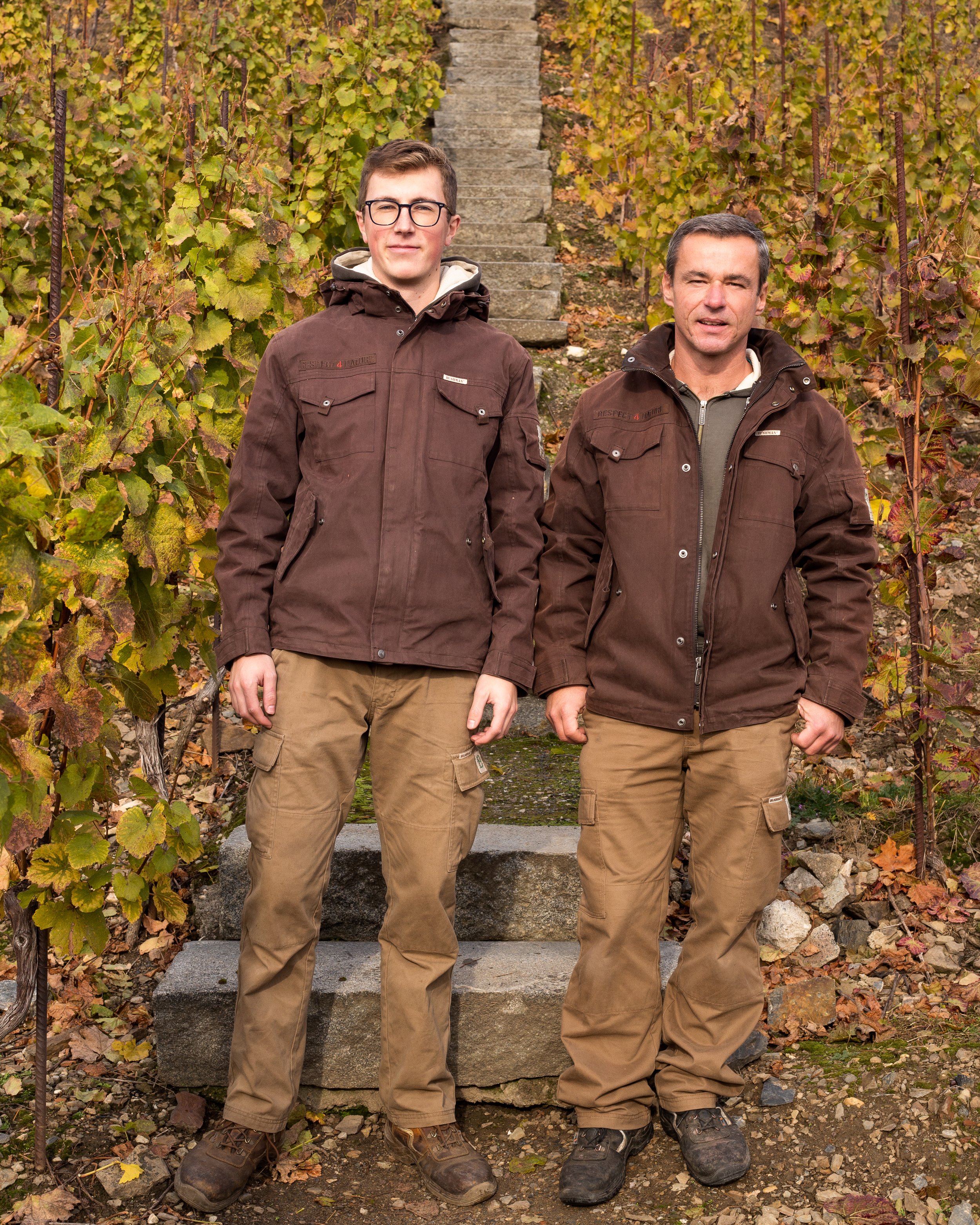Prague Won't Let You Go — The Winemakers Who Settled In The Golden City
“I did it to live my father’s dream,” Jan Tomasek says.
“He always said that when he retired, he wanted to buy a pub with a butchery in a small village. But then he died suddenly and couldn’t fulfil his dream. He left some money for me, and I decided to fulfil it for him.”
Photography by Fernanda Seavon
Wine production in Prague is not lucrative. No one enters the industry to become rich. Instead, it is wrought with emotional motivations and moving personal stories. Jan’s promise to his father was not the only one I heard on a day of wine drinking in the Czech capital.
A day that started at St. Claire’s Vineyard in Northern Prague.
***
Standing on his tiptoes, Martin Benerak, wine curator at St. Claire’s, is sucking wine out of a wooden barrel with a glass wine thief. In two careful jumps, he gets down to the cellar floor and pours his sweet-tasting 2019 vintage into our glasses. It’s our third taste of the day and it’s not even noon yet. For Martin, it doesn’t matter.
“It’ll only help me with all the boring office work I have to do later,” he laughs.
A lonely chapel overlooks Martin’s vineyard from the top of the hill. If it wasn’t for the sight of Prague Castle in the misty distance, you might think you were in Tuscany—not the beer capital of the world.
St. Claire’s Vineyard is one of more than a handful of vineyards located within Prague’s city limits. In 2019, the Czech Republic produced 481,000 hectolitres of wine, two-thirds of it white, and the vast majority consumed within the country. Around 95 per cent of the Czech Republic’s wine was produced in the Southern region of Moravia, near the country’s border with Austria. So, even though vineyards line the hillsides of the city’s most central parks and next to its famous castles, most people, including locals, are unaware of the vineyards of Prague.
It’s a sunny November day, and Martin Benarek and his 20-year-old assistant Andrej Jaburek have agreed to give a tour of St. Claire’s Vineyard. The vineyard is special—it is part of Prague’s botanical garden, and all of the 10,000 litres of wine that it produces each year are sold to visitors of the park. There are 300,000 of those a year, so the winery is not lacking in customers.
But none of those visitors are present today. Only a few workmen in bright, reflective workwear are among the wines. The harvest finished a couple of weeks ago, so scarce few leftover purple grapes catch the eye in a sea of lime green plants.
As we tour the premises, however, it is obvious that this vineyard is not only meant to please the taste buds of its customers but also the senses of its visitors. A large metal sculpture has been placed at a junction in the pathway leading to the hilltop chapel. Inside it, visitors can smell a range of different wine additives. And a little further up the path, single rows of more than 20 different grape varieties are displayed.
“We don’t make all of these into wine,” Martin says with a cheery laugh.
Instead, he says, they are all mixed together and made into burcak, a local variation of fermented grape juice.
“Our task here is not only to produce wine but to inform the public. We try to tell people about our long history of wine production. Not only do foreigners not know that wine is produced right here in Prague, but many people from Prague don’t know either,” Martin says.
***
The history of wine production in Prague dates back to the year 1358. In this year, Holy Roman Emperor Charles the 4th, from his seat in Prague Castle, decreed that all hillsides within a three-mile radius should be planted with vines.
“Charles the 4th was a good guy because he brought the Pinot Noir grape here. It’s a great grape for this part of the world as it suits the soil and the climate,” Martin says.
But it wasn’t a total stroke of genius.
“Actually, in the 14th century, it wasn’t such a good idea since a small ice age was hitting Europe back then. But after a few centuries, it turned into the perfect grape for Prague.”
Perhaps this unfortunate timing is the reason that wine production never really took hold in Bohemia. Instead, the techniques and know-how developed in Prague were taken south to Moravia, the Czech Republic’s main wine region.
***
A little way up the road in the same hilly neighbourhood of Northern Prague, Jan Tomasek and Tomas Osicka are waiting to give a tour of their vineyard—a vineyard that holds so much personal connection to Jan.
“We are Big Tomas and Little Tomas,” Jan jokes, playing on the fact that his surname is a diminutive of his friend’s given name.
Jan himself is the owner and manager of the restaurant Salabka, plying for a Michelin Star. The vineyard, adjacent to the restaurant, sells three-quarters of its 13,000-litre annual production to Salabka. Tomas is both the restaurant’s sommelier and in charge of the wine’s production next door.
““There is something very special about producing wine in this location.””
We climb into a golf cart and wobble around the edges of the oblong vineyard, the two Tomases in the front seats. Tomas answers questions about grape sorts and production, how long it takes to establish new fields and the best time to harvest. Jan sits back calmly and lets his friend and employee talk, helping out when a translation is needed.
When he is asked why he decided nine years ago to invest in a vineyard in Prague, Jan explains his promise to his father. His promise of realising the unfulfilled dream of buying a pub and a butchery.
“Instead of the pub it became a restaurant and instead of the butchery it became a winery.”
Jan knew nothing about wine before buying the vineyard. He simply saw the opportunity of buying Salabka as too good to pass up.
“There are not many vineyards in Prague and none of the others have a restaurant connected to them. That was a unique opportunity, and I thought it was a good way to do what my dad wanted but in a different way.”
Although Jan invested a lot of money in buying Salabka, the place still hasn’t become a financial success. But as he stops the golf cart and points to Prague Castle on a hilltop to the south, it becomes clear that something less tangible matters more. Not only the legacy of his father but also the legacy of winemaking in the Czech capital. His investment is long-term; a passion project.
Of course, producing wine inside a European capital makes things more difficult. The land is more expensive than in the countryside, which is reflected in the profit made on each bottle.
“If I wanted to make money right away, I wouldn’t be making wine here,” he says.
“I would apply to build housing or sell the land to someone who would. But to me, there is something very special about producing wine in this location.”
***
Unlike Jan, wine runs in Tomas Osicka’s veins. He grew up on a vineyard in the south of Moravia and learned the trade from his parents. He remembers a childhood with wine as a prominent component, a childhood where he would secretly take early girlfriends to taste wine at his parents’ farm.
In one of his stories, one of these girlfriends had to move back to Prague. Tomas followed, always thinking it was just for a year, planning to go back to Moravia and eventually take over the family farm. However, that year in Prague, 2013, coincided with Jan looking for a person to take charge of wine production at his newly bought vineyard. And people with that kind of expertise are not easy to come by in Prague.
“When I got to Prague, I had no idea that anyone was producing wine here. But then one day my friend called me and told me about Salabka. And then I met Jan,” Tomas says.
His girlfriend was happy that Tomas got a job working with wine in the city, something none of them thought possible. He stayed, and they now have two young children, and Tomas is happy in the city.
“I am not a typical city guy. But when I am in the field, and if I forget about that castle,” Tomas says, pointing to it in the distance, “I feel like I am home in Moravia.”
And though he misses Moravia, there are advantages to working in Prague. In Moravia, he was used to a production that valued quantity over quality. But in Prague and at Salabka, the philosophy is different.
“When you produce wine for gastronomy like here, the wine needs to be more complex, and the production is more challenging,” he says.
***
Back in the wine cellar at St. Claire’s Vineyard further down the hill, Martin Benarek pours a new vintage into our glasses. Moods are improving. At this point, somewhere between our second and third glass, the 20-year-old assistant Andrej Jaburek takes his leave. University is calling, he lets us know politely. He can’t join us. And besides, despite working at the vineyard since he was 15, doesn’t even like it.
“I still haven’t learned to drink it. When I am out with my friends, we always go for beer. I just think it tastes better,” Andrej says.
Unexpectedly, Martin agrees.
“When you go out in Prague, the wine you can get is usually not of a very good quality. So, when I am out at a pub or a restaurant, I usually get beer as well. The beer is good here, and I get enough wine at work,” Martin says, laughing again.
After 40 years of communist rule ending in 1989, the Czech Republic is a country that is still discovering its wine culture.
“Before the revolution we didn’t even have supermarkets, so of course a lot has happened since then,” Martin says.
During the communist epoch the only focus was on volume. All the wineries had to meet certain quotas in their production and that resulted in a lot of low-quality wines.
“When the revolution happened, I was 11 years old, and I wasn’t drinking wine. But my parents were drinking it, and I don’t think it was of good quality.”
““It’s a little bit of a miracle that we can produce wine here in Prague.””
Like Jan Tomasek at Salabka up the road, Martin fell into the world of wine by chance. His point of entry, however, was a love affair with the natural world.
“I love everything about plants. I am happier when I’m outside in the vineyard than in here in the cellar,” Martin says, swirling wine around in his glass.
“And I’m a lot happier in both places than when I’m in the office.”
His love of plants sent him to an agricultural university. While there, he considered becoming a landscape architect, a farmer, or even a breeder of plants. In fact, during his studies he got a job in Prague’s botanical garden, where he now works, but in a section unrelated to wine.
But when by coincidence he got the chance to work in the garden’s vineyard, he became captivated by the botany of that plant that Charles the 4th had brought 650 years before.
“It’s a little bit of a miracle that we can produce wine here in Prague. Wine is usually grown in completely different climates,” he says.
When the chill of the wine cellar and a light intoxication at midday finally made me clear my throat and get up to leave, Martin seemed slightly disappointed. Instead of being with his plants in the vineyard or his wines in the cellar, he would now have to do paperwork.
“It’s over there, the office,” he said defeatedly, when we got outside, pointing to a tiny mobile home at the gate.
I left and walked south towards the city centre with a feeling that I had made a friend in Martin. It’s perhaps unusual to feel close to someone after only an hour-long wine tasting, but surely, this potential to forge friendships is one of those secrets of wine that makes it so meaningful to those who love it.



